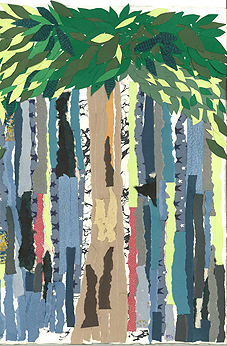The Fault Lines of Hindi and Urdu
Sanjay Kumar
Notes 1 See Rashmi Dube Bhatnagar and Rajender Kaur, “Literature to Combat Cultural Chauvinism: From Indian Literature to World Literature“ In Conversation with Satya Mohanty. Frontline 6 April 2012: 90. 2 For more details about the genealogy of Urdu see Shamsur Rahman Faruqi, Early Urdu Literary Culture and History (2001), especially the first chapter “History, Faith, Politics−Origin Myths of Urdu and Hindi,“ pp. 21-42. 3 Most historians claim that it got eclipsed in the North between fourteenth and seventeenth centuries, a claim which I examine later in this paper. 4 It had also spread to Gujarat, again with the Sufis, in the late 13th and early 14th centuries after the annexation of Gujarat by Alauddin Khalji (r. 1296-1316) and was practiced as Gujari. 5 Premchand’s short story “Shatranj ke Khiladi“ gives a picture of this decadent culture. 6 While describing it as the root cause of subsequent separation between Hindi and Urdu, Amrit Rai and Tariq Rahman blame the Mughal nobility which deliberately promoted this culture to compensate for their declining political fortunes. See Amrit Rai, A House Divided: The Origin and Development of Hindi Urdu (1984) and Tariq Rahman, From Hindi to Urdu: A Social and Political History (2011). 7 These Muslims came from different parts and cultures and in different waves. One cannot treat them as one homogenous or monolithic group. See Faruqi (2001). 8 See Alok Rai, “Making a Difference: Hindi, 180-1930.“ Annual of Urdu Studies 10 (1995): 138. 9 See Christopher King, “Forging a New Linguistic Identity: The Hindi Movement in Banaras, 1868-1914“ in Sandria B. Freitag. Ed. Culture and Power in Banaras: Community, Performance and Environment, 1800-1980, p.192. 10 Kaithi was more popular than Devanagari, but since it was used both by common Hindus as well as Muslims, this was not acceptable to Hindu nationalists. 11 See Francesca Orsini, Before the Divide: Hindi and Urdu Literary Culture (2010: 5). 12 See Imre Bangha, “Rekhta: Poetry in Mixed Language,“ in Orsini, p. 83. 13 See Allison Busch, “Riti and Register: Lexical Variation in Courtly Braj Bhasa Texts,“ in Orsini, p. 89 14 I am grateful to my colleague in the Urdu Department at Banaras Hindu University, Prof. Aftab Ahmad, for drawing my attention to these examples. Pages 1 2 3 4 5 6 7 8 |
Essays in this Forum
Rethinking the Global South
by Mukoma Wa Ngugi From Indian Literature to World Literature: A Conversation with Satya P. Mohanty by Rashmi Dube Bhatnagar and Rajender Kaur Asia in My Life by Ngugi wa Thiong'o The Global South and Cultural Struggles: On the Afro-Asian People’s Solidarity Organization by Duncan Mceachern Yoon The Fault Lines of Hindi and Urdu by Sanjay Kumar Reframing Colonialism and Modernity: An Endeavour through Sociology and Literature by Gurminder K. Bhambra Varieties of Cultural Chauvinism and the Relevance of Comparative Studies by Tilottoma Misra Literature to Combat Cultural Chauvinism: A Response by Shivani Jha Is There an Indian Way of Thinking about Comparative Literature? by E. V. Ramakrishnan Modernity and Public Sphere in Vernacular by Purushottam Agrawal West Indian Writers and Cultural Chauvinism by Jerome Teelucksingh Oral Knowledge in Berber Women’s Expressions of the Sacred by Fatima Sadiki |
